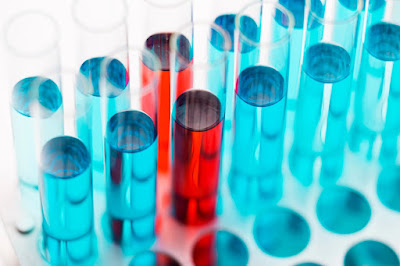What is Column Chromatography and What is the Role of Chromatography in Our Daily Life?
What is Chromatography
Chromatography
is the most commonly applied method for the separation of substance mixtures
into single components. This powerful technique is for example used in quality
control of drugs, in clinical research, or trace analysis of harmful
substances. Chromatography is essential for analytical chemistry around the
world.
Symtera Analytics has a comprehensive range of
chromatography products from sample preparation to subsequent analysis.
Provides scientists with the best solution for each analytical task. In HPLC we provide powerful solutions
featuring pre-packed columns with many different selectivities.
Column Chromatography
It is a chromatography technique in which separation is
carried out in columns. The column is filled with the stationary phase which
can either be silica, alumina, or cellulose. The bottom of the column is packed
with cotton or glass wool to support
the stationary phase. The column preparation is usually carried out by two
methods number one wet method and number two dry method
In the wet method, the stationary phase is mixed with a
mobile phase to make a slurry
and then packed in the column.
While in the dry method, the power of the stationary phase
is directly added to the column. Once the powdered stationary phase is packed
the mobile phase is flushed in the column to make it wet.
Now any of the methods can be used for column preparation.
However, care must be taken to avoid any bubbles in the column while packing
the stationary phase. Let's say the working of column chromatography. The
sample is loaded with the mobile phase on the top of the column. Once the
sample is loaded the mobile phase is continuously passed to cause separation.
The mobile phase moves down the column because of gravity. Separation of
molecules occurs due to their differences in interaction with
the mobile phase and the stationary phase.

For example, the green molecules interact more with the
mobile phase and move fast down the column while the dark blue and the wallet
molecules interact more with the stationary phase and hence move slowly. To
increase the flow rate of the mobile phase a bump or pressurized gas like argon
or nitrogen can be used. Once the separation is completed the samples are
usually collected as fractions.
The mobile phase leaving the column is known as Eluate. While the sample
molecules leaving the column are called Eluite.
Now depending on the type of stationary phase used there can
be several types of column chromatography. If the stationary phase is adsorbent
material like alumina or
silica then it's known as adsorption chromatography. If the stationary phases
ion exchange resin, then it is known as ion-exchange chromatography. If the
stationary phase is attached with the ligand that binds specific molecules such
as protein or enzyme then it is known as affinity chromatography. And if the
stationary phase is a porous gel or a bead then it is known as gel permeation
chromatography.
Chromatography in Daily
Life
Are you also a person who takes care of your health and the
health of your children? Whatever we do in our lives chromatographic chemical
analysis is an essential part, but most of us never see this. Chemical analysis
is the basis of the content specification
on our food and our medication. Next time you make a purchase look at the label
you will find values and specified ingredients.
These are measures from the chromatographic chemical
analysis. We all expect nutritious and safe food when we cook or go to
restaurants. The food should be free from adulterants and toxic or harmful
agents. It should not contain melamine pesticides toxins or other contaminants.
We have the same expectations of consumer
products like toothpaste and medicine. It should be safe to use and contain
what is specified.




Comments
Post a Comment